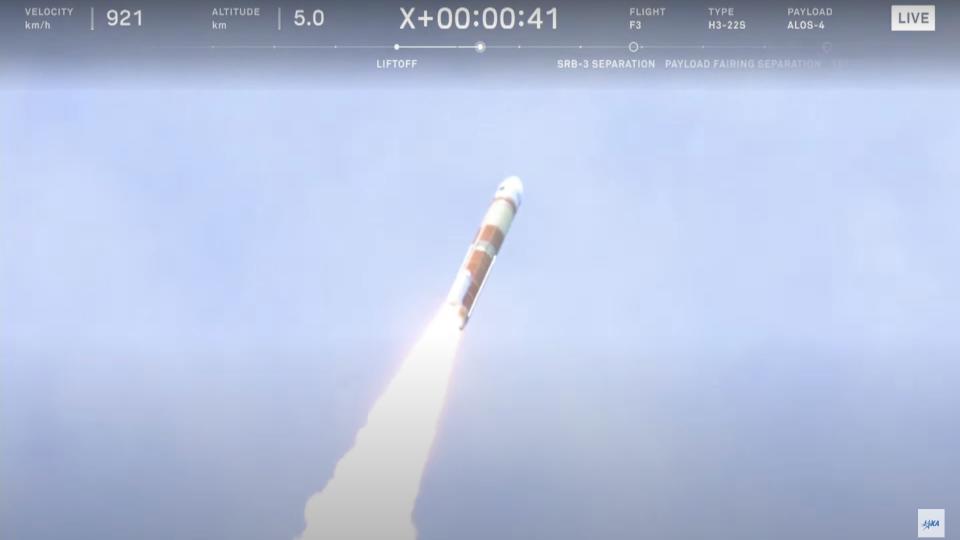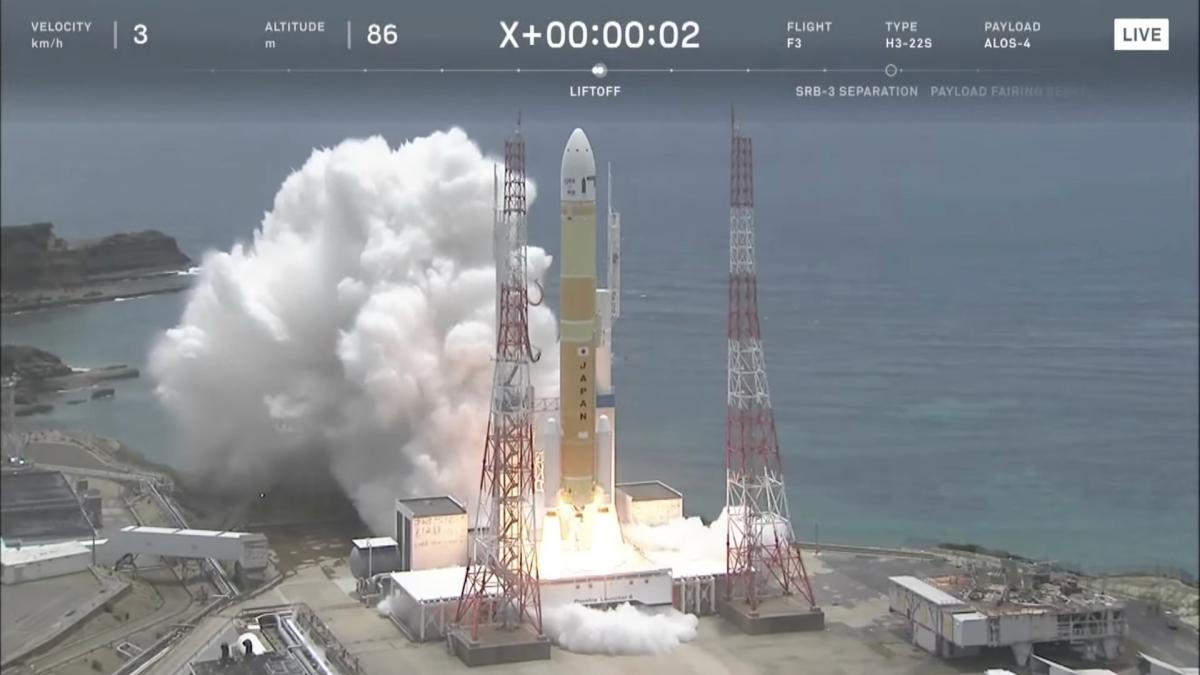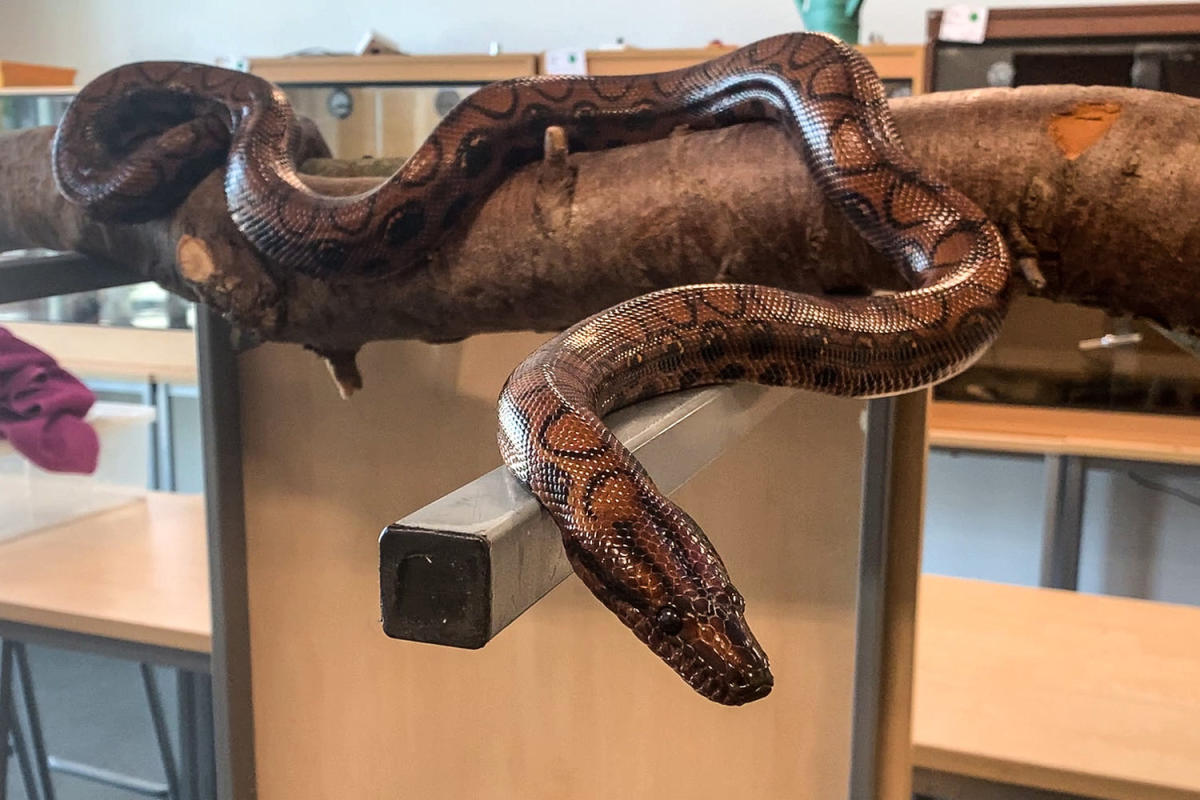Japan’s new H3 rocket flew for the third time ever tonight (June 30).
The H3 launched the Advanced Land Observing Satellite-4 (ALOS-4; also known as DAICHI-4) from Japan’s Tanegashima Space Center tonight. The satellite lifted off at 11:06 p.m. EDT (03:06 GMT and 12:06 a.m. Japan Standard Time on July 1).
ALOS-4 was deployed into low-Earth orbit as planned about 16 minutes after launch, commentators said on the Japan Aerospace Exploration Agency (JAXA) webcast.

The two-stage H3 was developed by JAXA and Mitsubishi Heavy Industries. It is planned to become Japan’s mid-range rocket workhorse, taking the reins from the H-2A, which will be retired later this year after more than two decades of service.
Related: Japan’s new H3 rocket fails on first test flight, leaving advanced Earth observation satellite lost
The H3’s road to orbit has been a bit bumpy, however. The new rocket was originally scheduled to launch for the first time in 2020, but engine development difficulties and other issues have pushed that debut back to March 2023.
And that first launch didn’t go well: The H3’s upper stage engine failed to ignite and the rocket’s payload, the Advanced Land Observing Satellite-3 (ALOS-3, or DAICHI-3), was lost.
The H3 bounced back on its second flight, which took place in February of this year, carrying a 5,900-pound (2,600-kilogram) mass simulator as its main payload. The rocket successfully reached orbit and also deployed two small Earth-observing satellites, dubbed CE-SAT-IE and TIRSAT, which were along for the ride.
RELATED STORIES
— A faulty power supply thwarted the debut launch of Japan’s new H3 rocket
— Japan’s new H3 rocket reaches orbit for the first time (video)
—The history of rockets
The 3-ton ALOS-4 is the advanced successor to Japan’s ALOS-2 satellite, which has been studying the Earth using synthetic aperture radar since its launch in 2014.
“JAXA and its prime contractor, Mitsubishi Electric Corporation, are developing the satellite with the goal of achieving both high resolution and broader observation range,” JAXA officials wrote in an ALOS-4 mission description.
“Unlike observations by an optical sensor, radar images can be obtained day and night, as no sunlight is required,” the agency added. “In addition, because radio waves can penetrate clouds, images can be obtained regardless of weather conditions. ALOS-4 will exploit these advantages for observing and monitoring disaster-stricken areas, forests and sea ice.”







